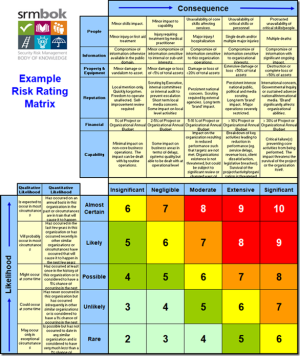Deconstructing iCam, Useful or Useless?

If you want to know what Safety really believes you have to critique its silences (https://safetyrisk.net/silence-power-and-an-ethic-of-risk/ ), not what it is noisy about (https://safetyrisk.net/the-noise-of-safety-silence-and-practicing-of-mindfulness/ ). Unfortunately, the ‘noise of safety’ is a distraction from the main agenda, helping the resilience and well being of persons. Unfortunately, this goal requires some degree of critical thinking (https://safetyrisk.net/critical-theory-critical-thinking-and-safety/ ; https://safetyrisk.net/critical-thinking-at-risk/) again, another one of the great safety silences in curriculum and discourse.
However, we know why Safety loves behaviourism (https://safetyrisk.net/the-curse-of-behaviourism/ ) and zero (https://safetyrisk.net/learning-to-reject-zero/ ). Both pander to the undisclosed assumptions of personhood that enable brutalism, bullying and policing people. In this way it is so easy to spruik the discourse of heroes (https://safetyrisk.net/no-gurus-no-stars-no-heroes-needed-in-safety/) and saving lives (https://safetyrisk.net/making-safety-religious/ ), and therefore create an alienating sense of superiority essential for the hoarding of power and importance.
Unless safety becomes a helping profession, it will never become professional (https://safetyrisk.net/safety-as-a-helping-profession/ ). Without an ‘ethic of helping’, the use of the word ‘professional’ is just spin (https://safetyrisk.net/poisoning-the-professional-waterhole/ ; https://safetyrisk.net/a-professional-ethic-of-risk/ ).
This leads us to the way Safety undertakes investigations and/or enquiry about events. In this regard, it is amazing how the iCam product has been made some kind of ‘standard’ in reviewing/investigating events.
Just like the Bow-tie model (https://safetyrisk.net/bow-tie-bs/ ), iCam is NOT a person-centric model of enquiry. I guess that is why Safety loves it so much (https://www.safetywise.com/ )
All models and methods in risk and safety hide a methodology (philosophy/ideology/discourse) that drives a method and iCam is no exception.
Let’s consider the following:
- It is important to realise that iCam is based on the mythology of safety developed by James Reason (https://www.safetywise.com/single-post/2016/02/24/the-benefits-of-the-icam-incident-investigation-process ). Hidden behind the logic of iCam is the flawed symbology of swiss cheese linearity made up by Reason (https://safetyrisk.net/the-swiss-cheese-addiction-and-covid-delusion/). The flawed methodology of Reason is also one of these unquestioned models that Safety has deemed orthodox (https://safetyrisk.net/a-critique-of-pure-reason/ ). The swiss cheese model is made up, it’s not real. It is a symbol for a way of thinking but it is not a resemblance of reality. The swiss cheese is a model placed over reality that invokes order for events and determines that events unfold by some kind of linear sequence when this is not the case. Safety people would be much better served if they assumed events unfolded according to their own unpredictable form of chaos and messiness. iCam convinces that events are ordered, systematic and linear. It provides a construct that Safety likes, but it is a construct placed on reality not reality itself. Even then, if you criticize any of the constructed lords, heroes and gurus of safety one is demonized not considered critically. Unfortunately, once something is made ‘orthodox’ by a group it is then politicized and then any criticism is deemed un-safety.
- iCam sets a method for inquiry that hides its assumptions about many things eg. the nature of personhood, an ethic of risk, the organic nature of emergence, the politicization of orthodoxy and privileging of uncritical, mechanistic thinking.
- iCam is not infallible and needs to be questioned. It’s system and the assumptions of its method create a way of thinking that by its own process, limits free and open thinking and trust in the subjectivities of the investigator/enquirer. Once you follow a method like iCam, you accept the assumptions of its undisclosed methodology and design. Perhaps this is why Safety loves it so much, because it eliminates the need for open critical thinking. It’s easy.
- The language and discourse of iCam is infused with the language of Reason, again shaping thinking towards ‘failures’, ‘unsafe acts’ and ‘latent conditions’. All of this ‘Reason-speak’ shapes belief in how events unfold and how humans make decisions. This doesn’t make it real, it’s just a construct that appeases ‘safety think’.
- iCam is focused on systems and doesn’t have an ecological understanding on the fluidity, unpredictability or organic emergence of Socialitie (the social nature of being) and decision making.
- Whilst iCam claims to be ‘holistic’ it is far from it. There is so much it doesn’t consider (https://safetyrisk.net/the-seek-investigations-donut/) that it is laughable.
- The language of iCam doesn’t consider an ethic of engagement nor the well-being of persons in its method. By its own language is has a focus on ‘communication, training, operating procedures, incompatible goals, change management, organisational culture and equipment’. Its focus is on ‘what went wrong’ and ‘remedial action’. There is no help in iCam for an understanding of the social complexities of interviewing or the counselling nature of an interview. The drive is for an outcome NOT for the consideration of persons caught in the trauma of an event.
- iCan has a focus on ‘human factors’. However, we know that the school of ‘human factors’ is NOT about human factors but rather humans as a ‘factor’ in a system. The opposite is the case. Humans are NOT a factor in a system but rather systems are created to serve humans. In reality systems are a construct to serve human social organising (Socialitie) and should not be given primacy in any enquiry. Such primacy blinds any investigation to: where, how and why it envisions risk (https://www.humandymensions.com/product/envisioning-risk-seeing-vision-and-meaning-in-risk/ ). The way we envision risk determines our ethic, discourse and method.
- There is no understanding of Socialitie or Social Psychology in the iCam method. Similarly, any understanding of social influences (https://safetyrisk.net/mapping-social-influence-strategies/ ). Even the slightest understanding of any of the influencing factors in this poster will make it clear that iCam is NOT holistic. Indeed, iCam rewards the ignorance of Safety and gives it the outcome it desires but it is NOT a reflection of reality. Though iCam claims to represent a psychological perspective it does not and is biased to behaviourist assumptions and doesn’t countenance a broad range psychological issues.
- Unfortunately, iCam doesn’t engage with the problem of subjectivity/objectivity and like the AIHS BoK chapter on Ethics assumes the objectivity of the investigator. Such is not just misleading but dangerous. The start of all training on investigation must begin by understanding the biases and prejudices of the human fallible person. The key to investigations is NOT a method but understanding oneself and the nature of persons.
- So, when one receives the biases of an iCam method and accepts them as orthodox, one becomes an iCam investigator not a good investigator. Churning out an ‘investigation sausage’ (https://safetyrisk.net/investigations-and-the-causality-sausage/ ) doesn’t make for a healthy diet. The outcome of Dreamworld is a prime example of what happens when you hand over an investigation to engineering thinking (https://safetyrisk.net/an-engineering-dreamworld/ ). If the worldview one throws at an investigation is not transdisciplinary (https://safetyrisk.net/the-value-of-transdisciplinary-inquiry-in-a-crisis/ ; https://safetyrisk.net/transdisciplinary-safety/ ; https://safetyrisk.net/transdisciplinary-thinking-in-risk-and-safety/ ) it can never be ‘holistic’.
- There are far too many gaps and unquestioned assumptions in iCam to help safety people to develop competence in investigation. Similarly, we see in the accepted method of IOSH (https://safetyrisk.net/investigations-the-iosh-way/ ) with a complete lack of intelligence about persons, ethics, fallibility and the organic nature of human judgment and decision making. When a method’s outcome is brutalism, you can be sure it hasn’t considered an ‘ethic of risk’ or the nature of personhood (https://safetyrisk.net/personhood-and-risk/). There is simply no discussion of ethics in iCam. It’s a great example of how to learn a process/product without considering the by-products of its process.
- We all know that Safety loves templates. Templates enable people not to think but rather adapt the thinking of the designer of the template, often an engineer or safety sausage maker. iCam provides templates in spades and this enables closed sausage production. Checklisting (https://safetyrisk.net/checklisting/ ) is the enemy of safety not its saviour. If Safety is ever to become professional it needs less templates and more open critical thinking.
- So, in the Social Psychology of Risk (SPoR) much more is offered than a template and investigation sausage. The SEEK program (https://cllr.com.au/product/seek-the-social-psychology-of-event-investigations-unit-2-elearning/ ) address many of the issues presented in this blog. Criticism of iCam is not just put out there without offering a more constructive and helpful professional alternative. Just because Safety provides A method doesn’t mean that is should be THE method. If anything, it is clear that iCam provides something to fill a vacuum, but such is not in itself a rationale for adopting such a method.
By making iCam ‘the standard’ or ‘orthodox’ approach to investigation, Safety has closed off critique, politicised the method and limited the capability of people in risk and safety to conduct: an holistic, open, realistic and intelligent approach to tackling the challenges of reflection on events and incidents at work.



Anonymouse says
Are we suggesting that Hopkins got it wrong too?
https://openresearch-repository.anu.edu.au/server/api/core/bitstreams/a78e8201-7615-4d57-aa95-dade4c7b3b91/content
Rob Long says
Hopkins is the one that thinks systems create culture? Really? I wouldn’t give Hopkins a minute of consideration.
Anonymous says
Agree on all criticisms of ICAM and Swiss Cheese, completely ego-centric and not representative of a Universe that is so not linear. From atoms, through eco-systems to planets and galaxies, energy interactions are no linear and to me, injury / illness in the workplace is an energy damage problem, not a people problem, though it is our problem to solve. I do disagree, albeit slightly, on the bowtie method. If a professional approach is taken, using Bowties to actually communicate the risk to the people exposed, and the people who own it, to help them understand it and actually deal with it, that is very helpful. If we could only bring your pure psycho-social thinking on safety, together with William H Haddon’s energy damage thinking and the thinking of an engineer like me, in terms of control objects, actions and systems, we could really get somewhere.
Anonymous says
The trouble is the classic bow-tie makes no mention of persons or social psychological or cultural elements. The idea that injury is an energy problem not a people problem unfortunately detracts from the complexity of decision making and a host of cultural and social-psychological issues that remain silent. Psycho-social thinking is NOT Socio-psychological thinking too. They are two completely different disciplines and domains.
Anyway, thanks for your response and discussion.
I find Haddon’s model far too focused on the mechanics and engineering of systems to be of much use.